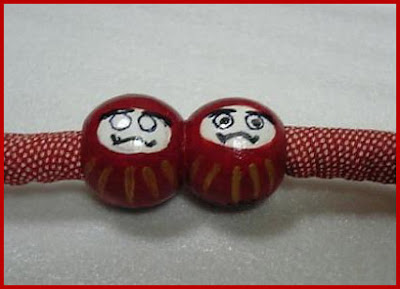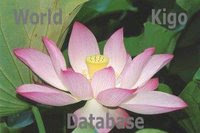[ . BACK to DARUMA MUSEUM TOP . ]
kumihimo, see below
:::::::::::::::::::::::::::::::::::::::::::::::::::::::::::::::::::::::::::::::::::::::::::::::::::::
Belt Buckle (obidome 帯留)
Ornaments for Japanese kimono belts.
Sanada himo, see below
 Detail of the handmade two Daruma figures
Detail of the handmade two Daruma figures
 Photos from my friend Ishino.
Look at more photos of these decorations !
Photos from my friend Ishino.
Look at more photos of these decorations !
:::::::::::::::::::::::::::::::::::::::::::::::::::::::::::::::::::::::::::::::::::::::::::::::::::::
 Obidome, fixed as a pendant
from carvalen, Daruma Forum
Obidome, fixed as a pendant
from carvalen, Daruma Forum
:::::::::::::::::::::::::::::::::::::::::::::::::::::::::::::::::::::::::::::::::::::::::::::::::::::
Here is a wooden one from my friend Ishino.
it is about 2,3 cm wide.



size 3.3cm × 3.7cm
:::::::::::::::::::::::::::::::::::::::::::::::::::::::::::::::::::::::::::::::::::::::::::::::::::::
Made from metal
38 x 20 mm


about 3 x 3 cm, singed 利光作
Photos from my friend Ishino
:::::::::::::::::::::::::::::::::::::::::::::::::::::::::::::::::::::::::::::::::::::::::::::::::::::
:::::::::::::::::::::::::::::::::::::::::::::::::::::::::::::::::::::::::::::::::::::::::::::::::::::
 . Shogun Sanada Daruma
Sanada himo 真田紐 Sanada-himo ribbon
. Shogun Sanada Daruma
Sanada himo 真田紐 Sanada-himo ribbon
a flat, braided cotton cord

This is a flat small cord, made from silk or cotton or a mix of both. It is very strong and has been used for wrapping wooden boxes for tea ceremony utensils. It was also used to keep ornaments for the samurai weapons and armour or hang heavy things.
It comes in many patterns and colors to fit the situation, many are even made to order for a special event. One roll of the cord is about 5 meters long and takes about a month to weave by hand.
They are said to have been made first by Sanada Masayuki, the famous samurai and his retainers and were sold in the town of Sakai (now Osaka). Sanada no himo 真田の紐.
Others say the word comes from the Tibetan sanaaru サナール and the cord has been introduced during the Heian period via the Silk Road. It was then called "small weaving" sa no hata 「さのはた(狭織)」, later changed to Sanada.
Sanada uchi 真田打ち is another word.
Now it is used for many things, even the bands for Japanese formal sandals and decorations for handbags.

Ladies attending the tea ceremony, who had forgotten to bring a proper obi himo 帯紐belt, used this ribbon, because it was made of the same length than an obi himo.
obijime おびじめ【帯締(め)】 small belt to hold the obi
. . . CLICK here for obi himo ribbon Photos !
 kumihimo
kumihimo 組紐 is the round braided ribbon used for the court robes.
. . . CLICK here for kumihimo Photos !
kumiito, kumi-ito 組糸師 craftsman making Kumihimo
真田紐結べば亀の鳴きにけり
Sanada himo musubeba kame no naki ni keri
when I tie up
the Sanada cord, a turtle
starts crying . . .
Yamao Tamamo 山尾玉藻
kame ga naku : KIGO
:::::::::::::::::::::::::::::::::::::::::::::::::::::::::::::::::::::::::::::::::::::::::::::::::::::
. Traditional Crafts of Edo and Tokyo .
- quote -
Tokyo Kumihimo (Braided Cords)
 Traditional Technologies and Techniques
Traditional Technologies and Techniques
Plain dyeing, gradation dyeing and spaced dyeing are all techniques employed to dye the silk threads used in Tokyo Kumihimo (braided cords).
1- 糸染めは、無地染め、ぼかし染め又は段染めによる。
2-
組上げには、四ツ台、丸台、綾竹台(あやたけだい)、重打台(しげうちだい)、高台、内記台又は籠打台を用いる。
①綾竹台又は高台を用いる場合において、打込みにはヘラを用いる。
②重打台又は高台を用いて組模様を組み出す場合には、綾取りによる。
③籠打台を用いる場合において、使用する組糸はより糸とする。
Kumihimo cords are braided using yotsudai (four-bobbin) looms, kakudai (square) looms, marudai (round) looms, ayatakedai (bamboo) looms, shigeuchidai looms, takadai (high) looms, naikidai looms and kagouchi looms.
① With ayatakedai (bamboo) and takadai (high) looms, a beater is used to damp down the braid.
② When using either shigeuchidai or takadai (high) looms to produce braid, the patterns depend on the cat's cradle of threads created within the loom.
③ When using kagouchi looms, twisted yarn is the source of the braided threads used.
■Traditionally Used Raw Materials
Raw silk thread, silk thread, gold or silver thread
■History and Characteristics
The Kumihimo craft is one that enjoys a long history, the products created by it having a range of applications. In that Kumihimo cords secure the modern kimono obi (belt) and the tassels of haori (short coats worn with kimono), they remain invaluable in our everyday lives being used in a variety of ways.
Kumihimo technologies and techniques originally came to Japan by way of China and Korea. Through the ages, they came to be used in a huge variety of products.
Kumihimo cords were used in many roles. When priests sought to spread the tenets of Buddhism, their sutra scrolls and priestly robes were secured with Kumihimo. The aristocracy used Kumihimo when wearing formal dress. With the rise of the warrior class in Japan, Kumihimo were used to secure helmets and armor. A flat-braided cord was also developed to wrap the hilts of samurai swords.
As the wearing of short sleeves became fashionable, in addition to the obi and waist sashes used when wearing kimono, Kumihimo cords became widely used as a means by which to secure obi, etc. Kumihimo cords could also be taken from where they lay over obi. They could then be wrapped and tied as to pull up (shorten) kimono sleeves.
Historically, the samurai practiced the craft of Kumihimo as part of their occupation. It is said that in Japan, this craft was so advanced as to be unusual internationally. However, such skills were not merely refined to just tie or secure items. Rather, braid patterns and the allocation of colors within cords made it possible for individuals to express their fortunes, their gender, and their social positions, etc.
Furthermore, with names such as "Koryouchi Chosen" (literally "Damped Braiding from the Koryo Dynasty in Korea), it can be assumed that various braid patterns came to Japan from mainland Asia and the Korean Peninsula.
Concerning the looms used to create Kumihimo cords, they can be categorized into seven types: kakudai (square) looms, marudai (round) looms, ayatakedai (bamboo) looms, shigeuchidai looms, takadai (high) looms, naikidai looms and kagouchi looms.
The patterns in which threads are combined as well as the sense of "wabi-sabi" conveyed (literally the "simplicity and refinement" projected by the colors used) are felt to be symbolic of Tokyo Kumihimo.
Edo Kumihimo Manufacturing Guild
- source : sangyo-rodo.metro.tokyo.jp/shoko -
kumihimoshi 組紐師 making Kumihimo ribbons
 Kawakatsu Kumihimoten
Kawakatsu Kumihimoten 川勝組紐店
.......................................................................

itokumi 糸くみ
Shokunin burui 職人部類 by Tachibana Minkō 橘岷江
. Edo shokunin 江戸の職人 Edo craftsmen .
. Iga Kumihimo 伊賀組みひも Iga string art .
:::::::::::::::::::::::::::::::::::::::::::::::::::::::::::::::::::::::::::::::::::::::::::::::::::::
. Fly-catching ribbon 蠅取リボン(はえとりりぼん)
kigo for all summer
:::::::::::::::::::::::::::::::::::::::::::::::::::::::::::::::::::::::::::::::::::::::::::::::::::::
sageo 下げ緒 / 下緒 Sangeo cord

an important item for Japanese swords.
It not only makes a sword secure but also decorates it nicely.
quote
a hanging cord made of silk, cotton or leather that is passed through the hole in the kurigata (栗形) of a Japanese sword's saya.
There are a number of different methods for wrapping and tying the sageo on the saya for display purposes.
In some schools of Iaidō, the sageo is tied to the hakama when practicing.
© More in the WIKIPEDIA !
Sageo to order
source : www.kumihimo.se
:::::::::::::::::::::::::::::::::::::::::::::::::::::::::::::::::::::::::::::::::::::::::::::::::::::
The word ribbon リボン, or cord, just like that,
is not a kigo but a topic for haiku.
 冬ざるるリボンかければ贈り物
冬ざるるリボンかければ贈り物
fuyu zaruru ribon kakereba okurimono
winter bareness -
when I wrap a ribbon around it,
it becomes a present
Hatano Sooha 波多野爽波 1923−1991 Hatano Soha
The kigo here is
fuyuzare 冬ざれ
winter bareness
:::::::::::::::::::::::::::::::::::::::::::::::::::::::::::::::::::::::::::::::::::::::::::::::::::::
..... Kimono, Yukata, Nagajuban 着物、浴衣、長じゅばん
[ . BACK to WORLDKIGO . TOP . ]
[ . BACK to DARUMA MUSEUM TOP . ]
:::::::::::::::::::::::::::::::::::::::::::::::::::::::::::::::::::::::::::::::::::::::::::::::::::::


























































